This summer my parents and Deb & I travelled around the Gaspé Coast of Quebec and as part of the vacation stayed in the little hamlet Percé, famous for the rock from which it takes its name, Percé Rock. Not far from Percé Rock lies Bonaventure Island which is well known in the birding world as it is home to the world’s second largest, and most accessible, nesting site of the Northern Gannet. You can see Bonaventure Island in the back ground of this image of Percé Rock.
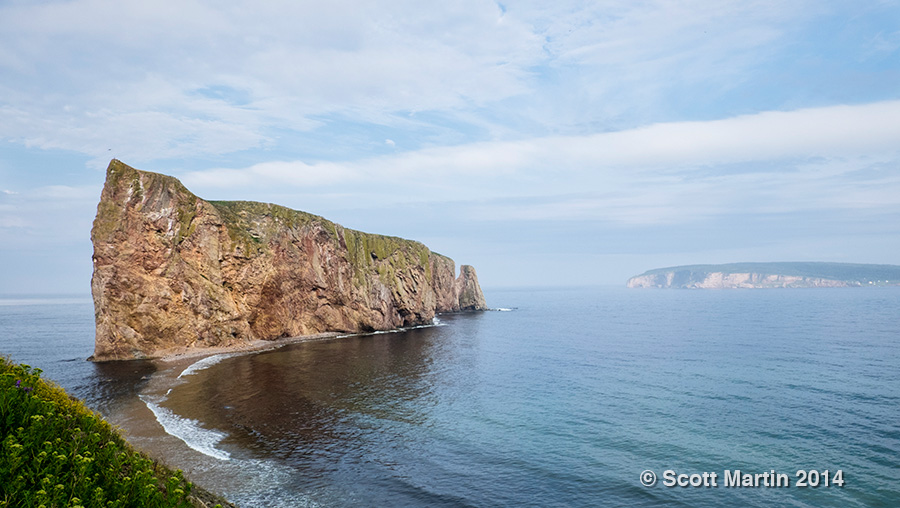
We were in Percé for two and a half days, so we could be reasonably assured to be able to take the short ferry ride over to the island to photograph the Gannets in community and maintaining their nests. Unfortunately heavy rains on the first day and high winds on the second precluded us from getting to there…..it was a classic case of “so close but yet so far”, which is often the nature of wildlife and landscape photography. The upside is that we can plan a return trip to once again see the beauty of the Gaspé Coast.
In terms of the Gannets, all was not lost as I was able to spend a couple of hours on the end of the ferry pier enjoying the high winds and photographing the odd Gannet that flew overhead while looking for fish! They are a truly a beautiful bird.
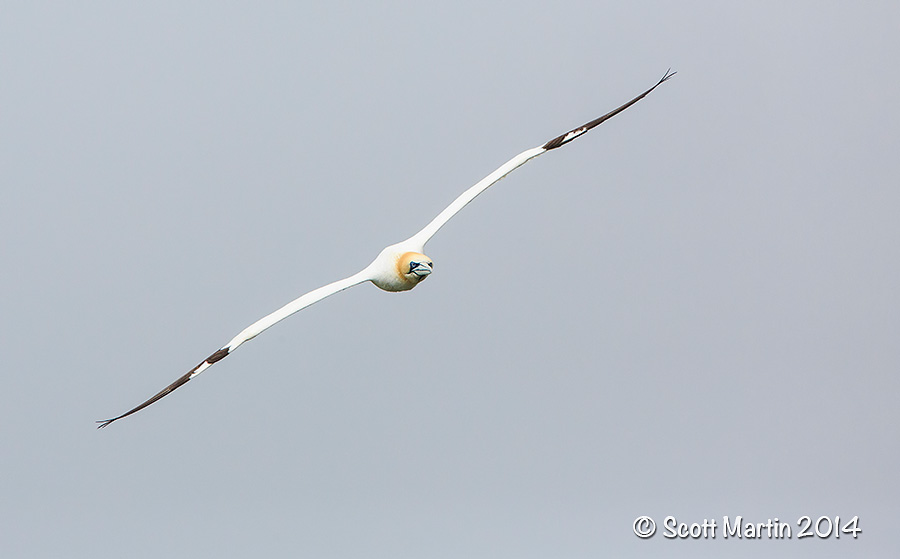
.
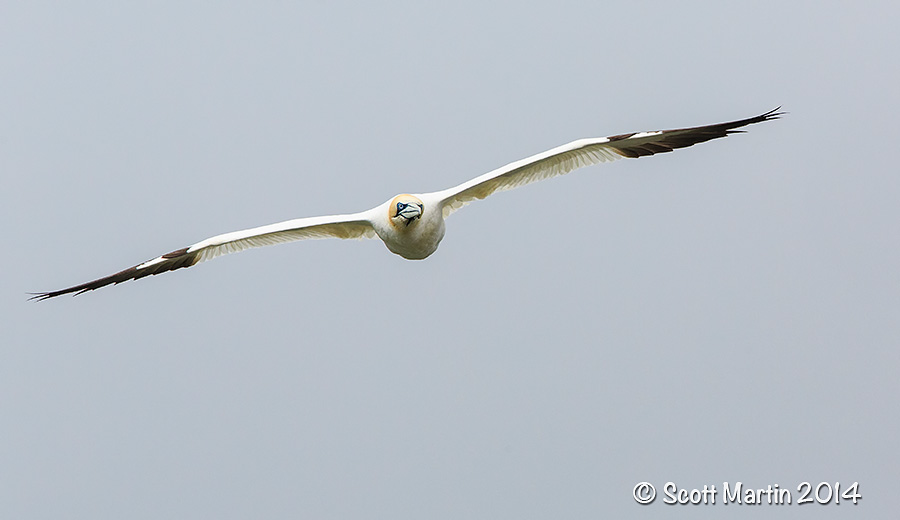
The Northern Gannet is a rather large bird measuring up to 43″ long, weighing almost eight pounds and enjoying a six foot wingspan. Although large, it is famous for its torpedo like diving style which allows it to strike the water surface at speeds up to sixty miles per hour. As noted above Gannets are primarily white with black wing tips in their adult plumage. When younger they are a uniformly brown colour and gradually take on the adult colouration when they are fully mature at about five years of age. In adults the colour of the head, cheeks and upper neck is variable depending on the time of year and during breeding season they become a beautiful golden yellow colour, which perfectly compliments their aqua blue eyes.
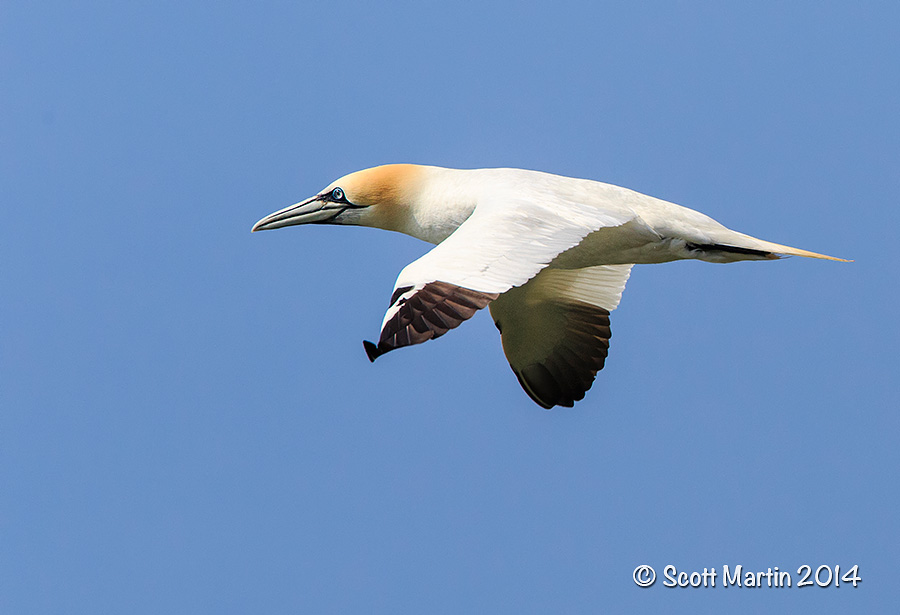
.
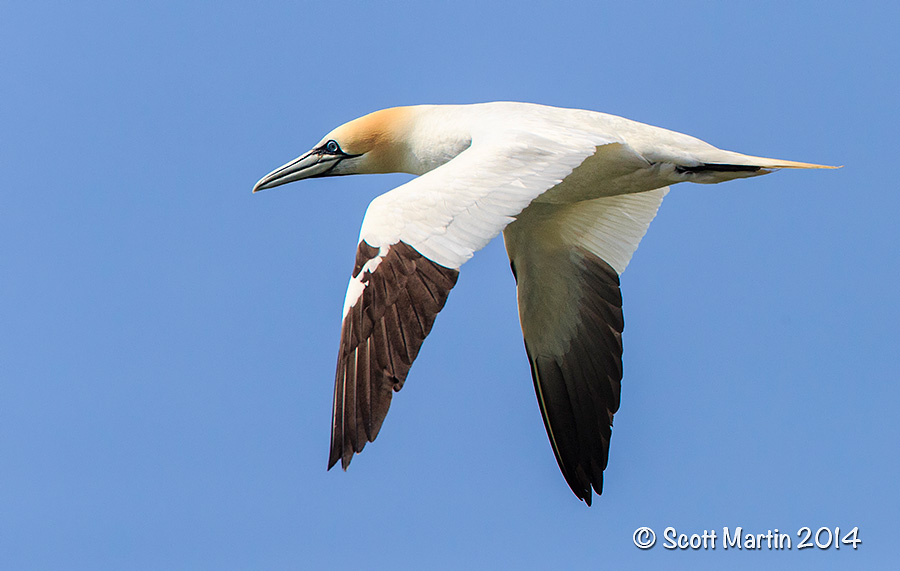
When photographing sea birds, the typical background is water & sky, however it was a pleasure to capture one bird against the greenery of the forest as if flew behind me on the pier.
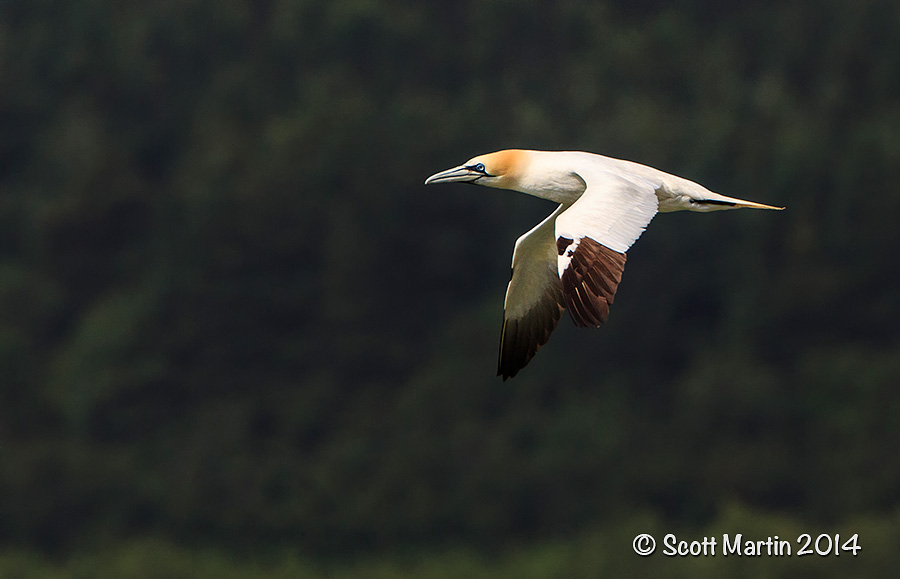
The Gannet has many unique and interesting design features that allow it function on the sea with maximum efficiency. Its wings are proportionally long and slender, and it fact weaker than most birds. As a general rule a bird’s wing muscles comprise at least 20% of their muscle mass, while the Northern Gannet is only 13%. Even still they are capable of cruising at speeds of up to 50 mph and can dive much faster than that. The next image highlights the long slender wings.
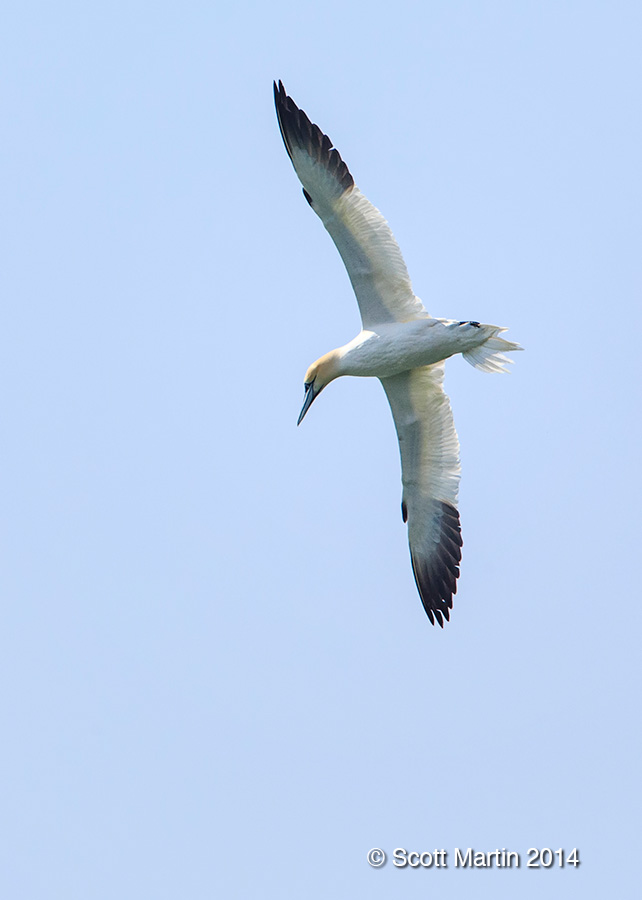
There are many other amazing design features of the Gannet that allow it to dive efficiently and also protect it from the water impact pressure when it strikes the surface at high speeds. They have no external nostrils and the secondary internal nostrils can be closed when under the water. Also their external auditory canals are small, covered by feathers and can be closed by a mechanism similar to the one used to close the nostrils. Perhaps the most remarkable diving protection enjoyed by the Gannet is its longer than usual sternum which guards the internal organs from direct impact pressure. Equally impressive are a series of inflatable air sacs, connected to the lungs which line the sides and back of the Gannet as well as between the sternum and pectoral muscles, further cushioning the impact pressure as the bird enters the water.
Gannets fly in fairly large groups about fifty to sixty feet above the water looking for schools of fish to feed on. You can see in this next image a few of the Gannets have spotted some fish below and are initiating their dive.
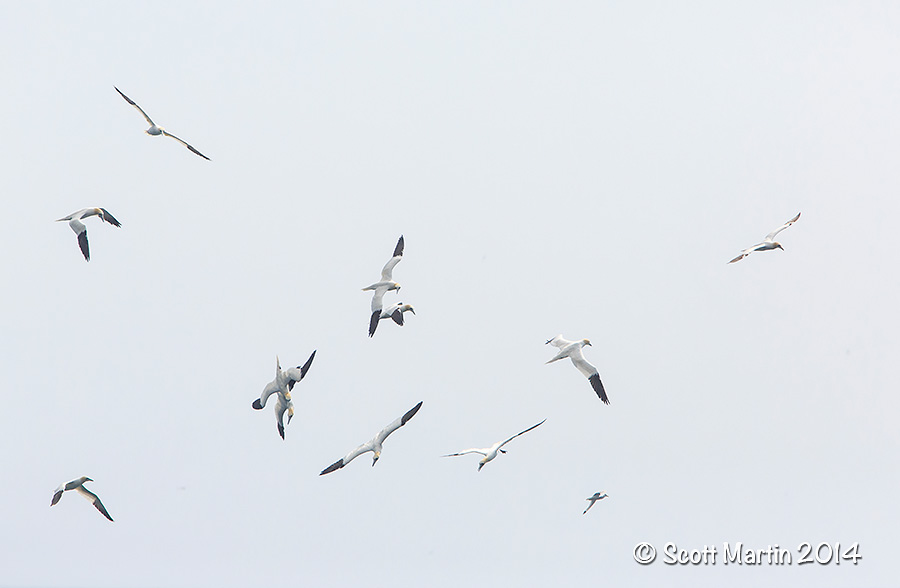
Gannets Fishing
When a Gannet spots a target fish it quickly applies its air brakes and locks on to its acquired target, which is seen in this next shot.
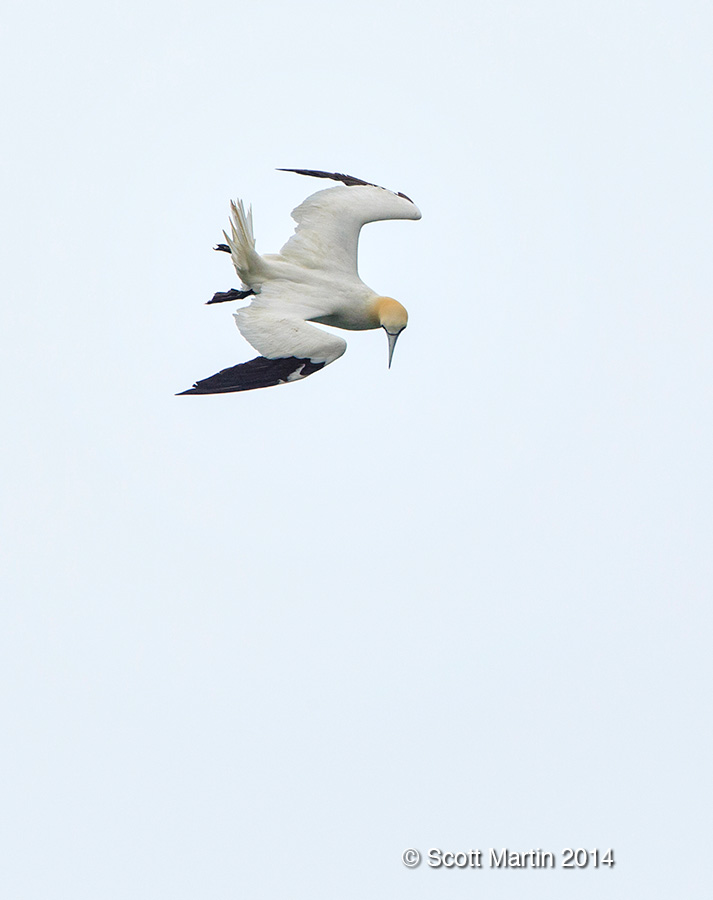
The next series of images shows the Northern Gannet in various stages of its dive (taken from the same dive sequence).
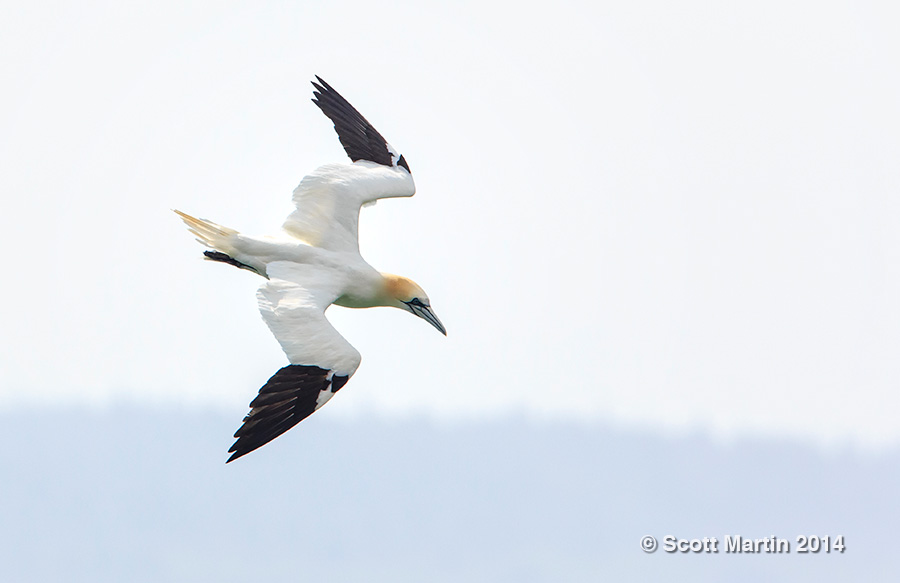
.
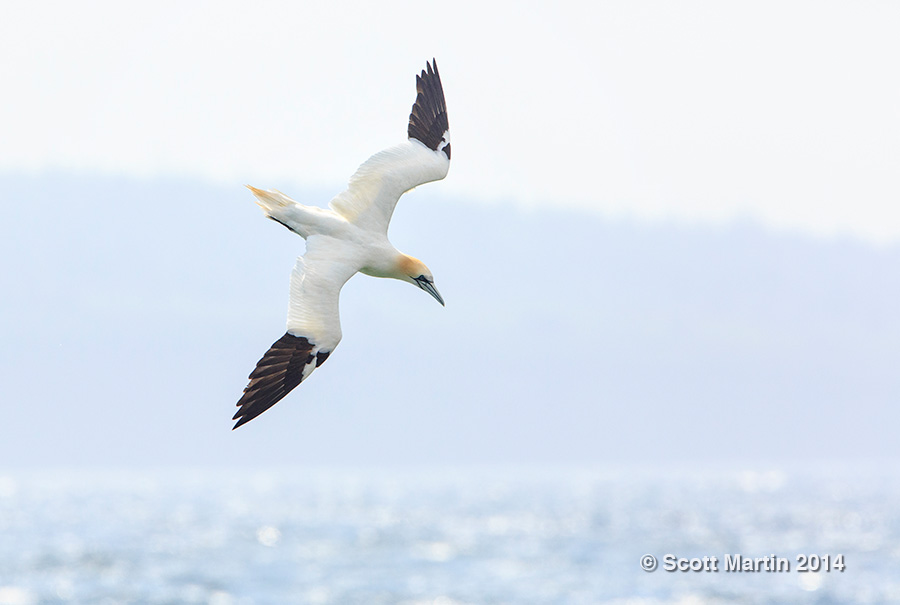
.
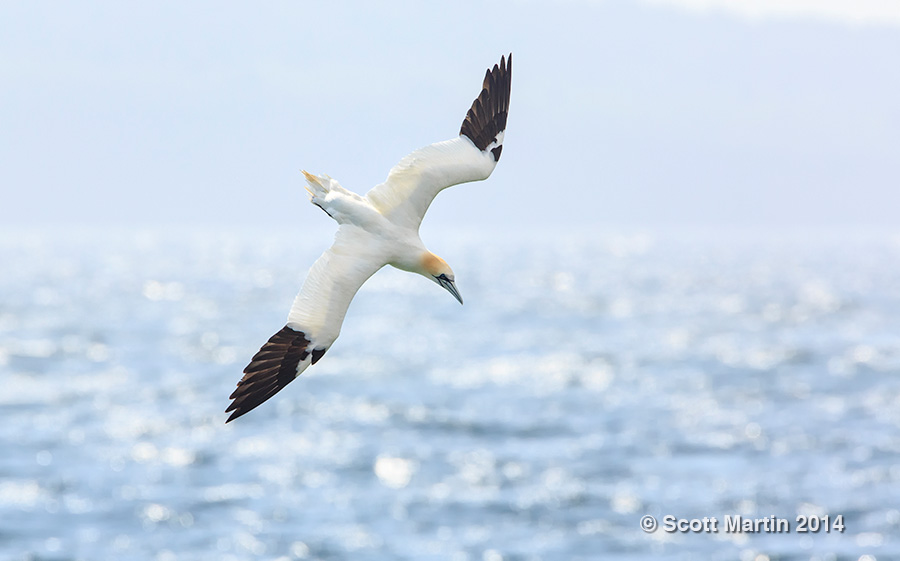
.
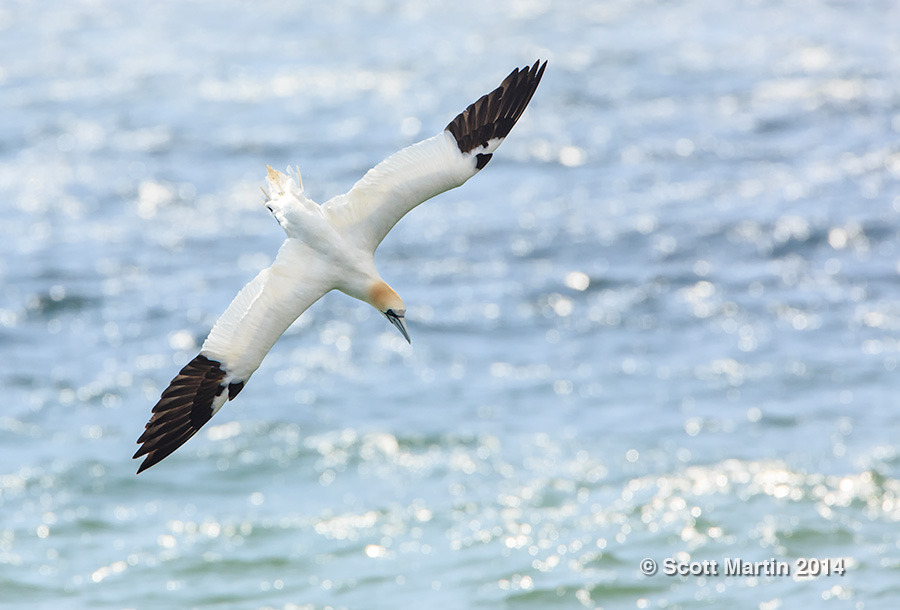
.
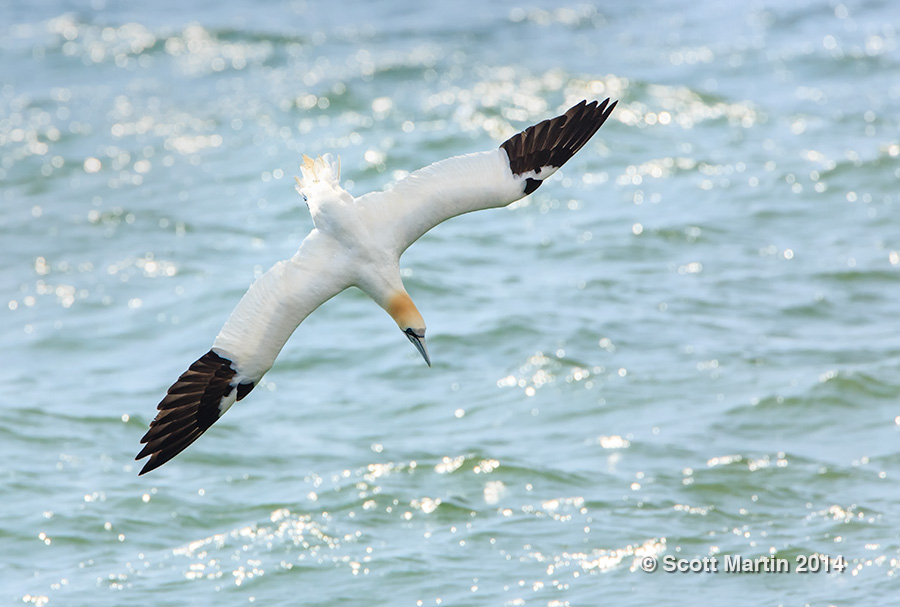
.
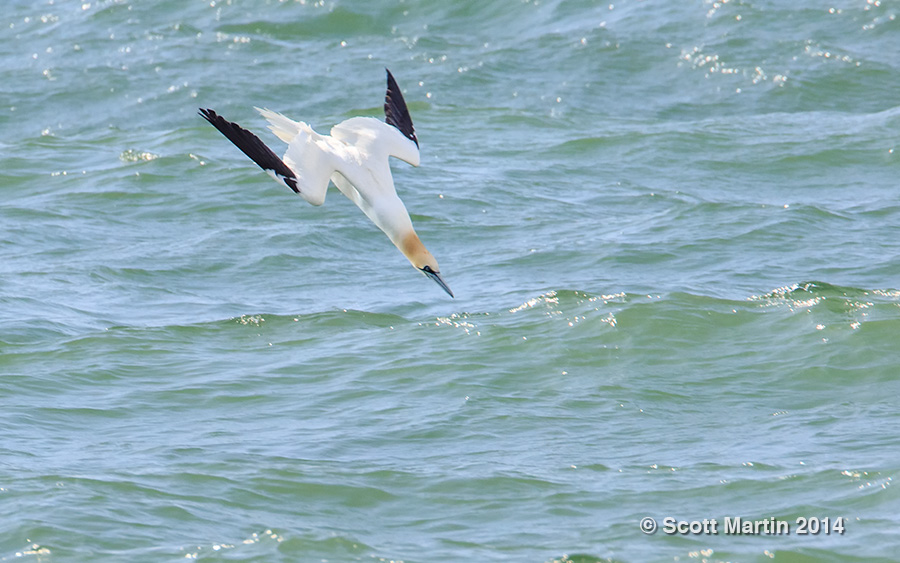
And a dive shot from another sequence showing the classic Gannet torpedo posture immediately pre-impact.
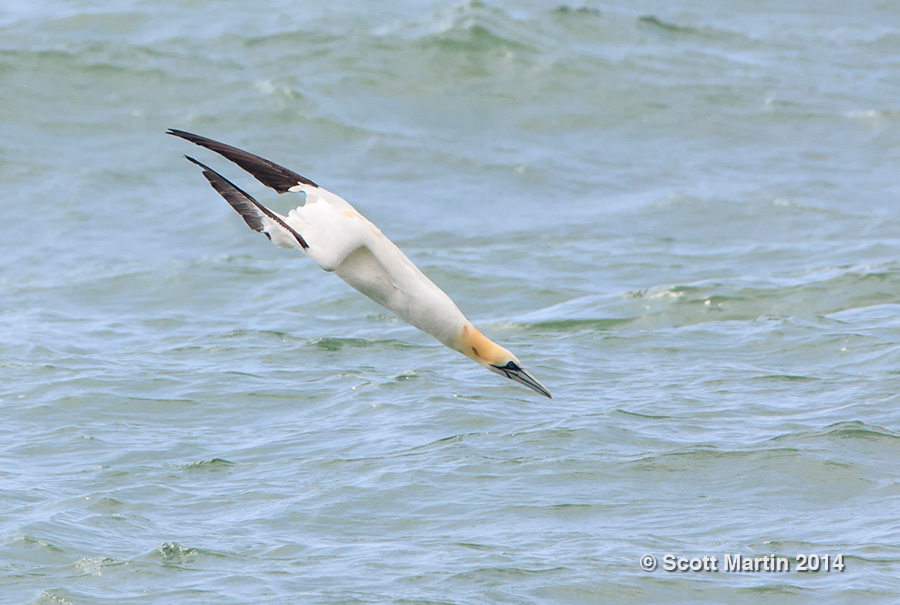
The diet of the Gannet is virtually 100% fish although they have known to eat squid opportunistically. They are no respecter of fish and will eat any variety available between the lengths of 1-12″. Interestingly they always swallow the fish while still underwater and will never carry a fish in their bill while inflight. When feeding the young before they fledge, the adults provide regurgitated fish.
When Gannets hit the water at up to sixty miles per hour momentum allows them to penetrate to depths of up to 15′ however they are also able to swim even deeper and have been recorded at depths of up to 45′.
Although we didn’t get to photograph the nesting sites on Bonaventure Island, there are lots of nest there. In fact it is estimated that there are more than 40,000 nests on the island accommodating over 100,000 birds.
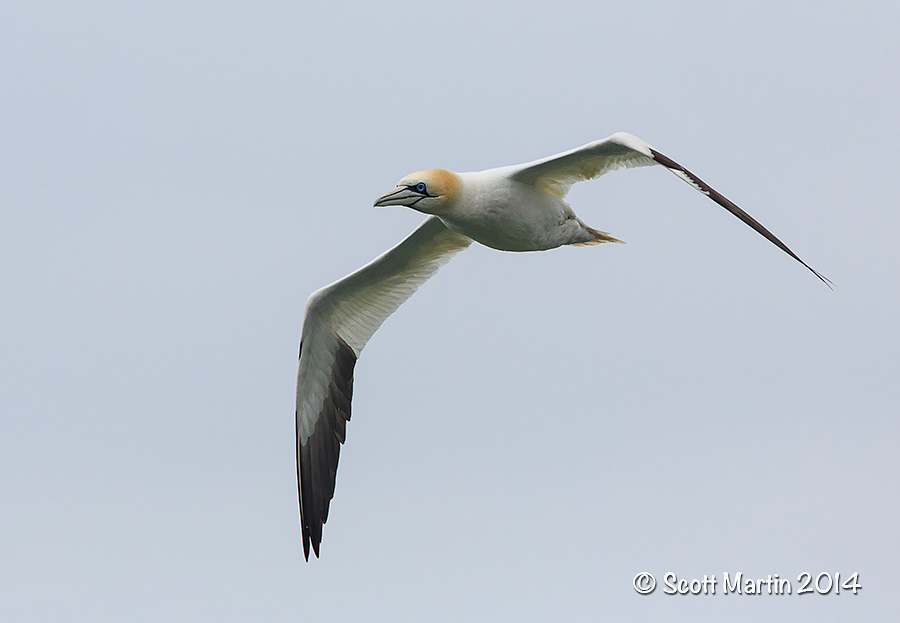
All of the images in today’s post were taken with the Canon 5D Mk III with the EF500mm f/4 L IS lens.
I trust you have enjoyed this brief photo exposé of the Northern Gannet of the Gaspé Coast. The Gaspé region is an absolutely fabulous place to visit and if you’ve never been, its one of those destinations that should be on everyone’s bucket list.


Scott, I found this blog truly fascinating, interesting, and informative. I first saw the gannets on Bonaventure Island about 65 years ago when I took the boat ride to the island with my mom and dad. I still remember my sheer amazement at the number of gannets that were perched on the cliffs along the shore, and also on the ground when we walked across the island. There were literally thousands of them! However, I had no idea they were so good at catching fish! I guess I never stopped to think where all those birds got their food! I never saw them in action, as you so vividly captured in your pictures. I doubt you would have gotten those neat pictures if we had been able to take the boat to the island. So you might say that was a blessing in disguise! Mom and I will always have fond memories of that trip. I wish my mom and dad could have seen your pictures.
Thanks Dad and it was a wonderful trip and I appreciate the positive spin you are putting on not being able to get to Bonaventure Island! It was fun to watch them fish and fortunately we were able to get a few good pics as well.
Scott ,
thanks for sharing pictures of the gannet and the info on them.,
Love Gail
Thanks Gail and I’m glad you enjoyed the Gannets!
A terrific post Scott, complete with interesting facts about the very beautiful Gannet. I particularly like images showing the diving sequence all aptly completed with a mere 6 frames per second 😉
Thanks Arni…and an anemic sounding 6 fps as well. You can’t beat the sound of a 1D 🙂